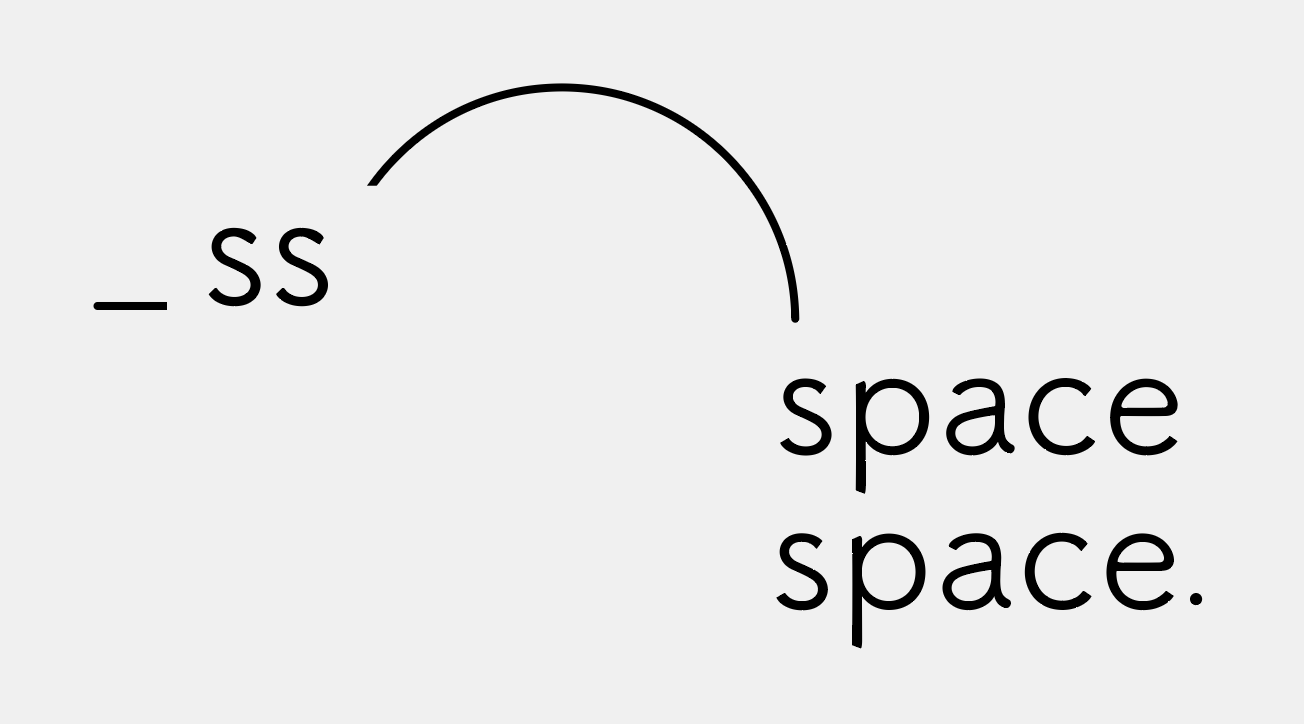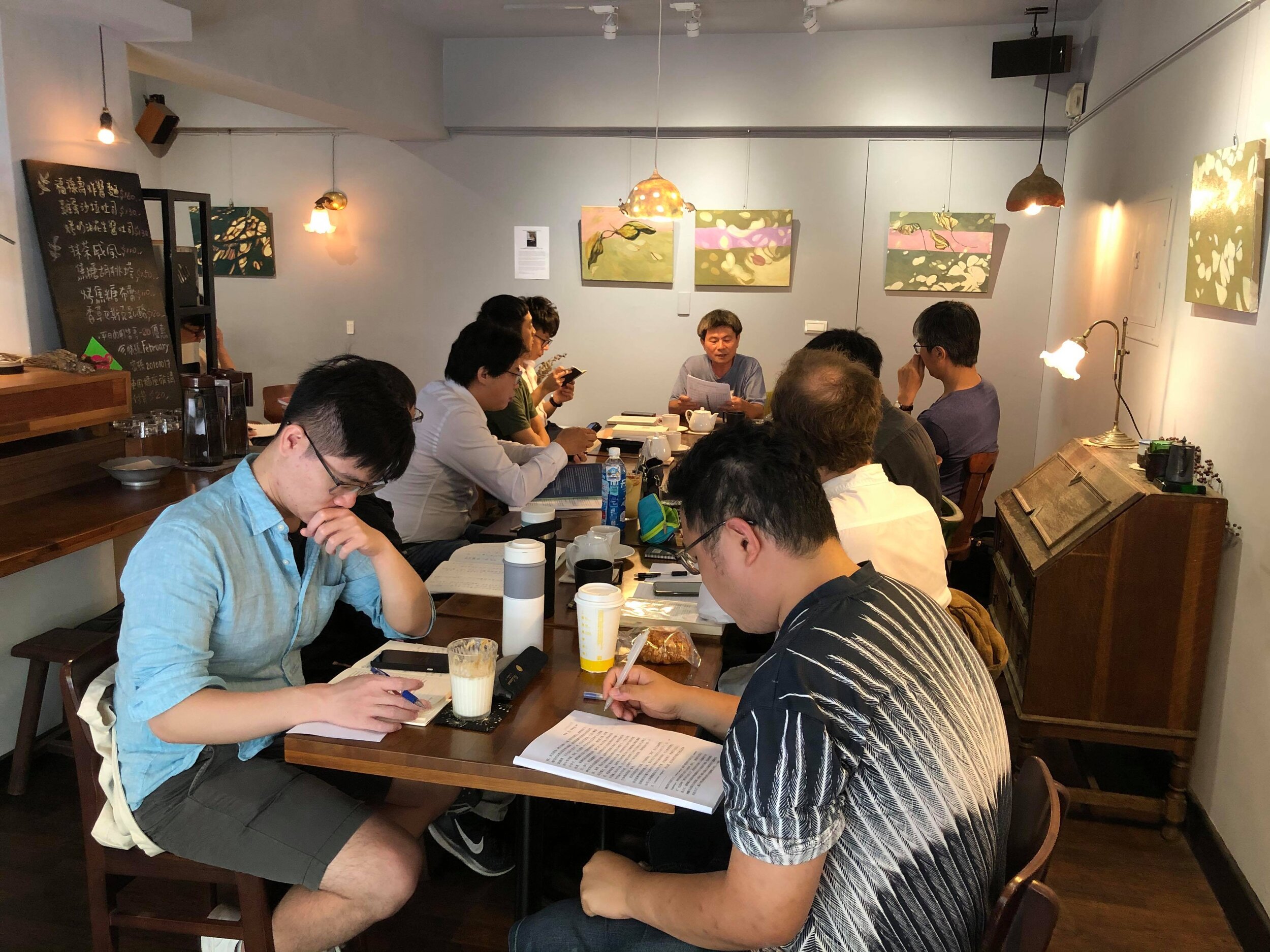
‘Space neither belongs to things, nor to the mind, but it is referred to the presence of the body.‘
Kuo-Hsien Chang
On Space
words by Kuo-Hsien Chang
Space is contemplated by many philosophers. Among the many who have written about it, the perspective of the French philosopher Maurice Merleau-Ponty most closely describes our experience, principally since he did not regard space as a pure object of thinking. Relatedly we are not regarded as a subject per se, but rather as ‘pure thinking-intention’, or pure consciousness. This is germane to his general philosophical outlook: Merleau-Ponty, as a phenomenologist, innovates in the tradition by introducing a certain notion of ‘body’ into phenomenology. However, what is the difference between thinking phenomenology with and without ‘body’? This essay will focus on Merleau-Ponty’s notion of ‘depth’ by considering the questions he raises in his work Phenomenology of Perception and in Eye and Mind, the aesthetic masterpiece of his later period.
How does the sense of the unfathomable come when we are staring at a forest or a well? It is not because it appears in an obvious way for me; it is always a part hiding behind another part. If we change our position of observing, although the hidden can come into sight, the other part, what was previously seen, would simultaneously become hidden. This will always be the case unless we could see from all perspectives at the same time to reveal all hidden parts. But then seeing becomes a purely spiritual seeing, or even becomes God’s view which is different from seeing as a being who possesses body. Here, the term ‘perspective’ should not be understood as everyone's subjective view; instead, it should be understood as the way of entering the world. We can still call ourselves subjects, but the meaning of ‘subject’ is no longer the pure intention of thinking for establishing principles for beings; rather, a subject is a body, in a situation, perspective and horizon that are always boundless. Merleau-Ponty sometimes considers this kind of engagement as characteristic of an inhabited or subject-obtained world. Through this kind of engagement, new ways of thinking about space open up. Besides regarding space as a container, environment (Aristotle) or the common property of beings from the perspective of the object (Descartes, Spinoza), and regarding space as the sites of objects and possibilities from the perspective of the subject (as Kant observed conditions for geometric spaces from the subject position), is there another path of understanding available in addition to these traditional conceptions?
For Merleau-Ponty, the origin of space is in inhabiting or in the body-subject having access to its world.[1] However, we should not misunderstand the body as that of a human organism, because the body can be a potential or a virtual body. If we remember the experiment that Merleau-Ponty mentioned, subjects were placed before a slanted mirror. At first, the subjects felt that everything in the room, even the chandeliers on the ceiling, were inclined. After a while, as soon as they were able to ‘obtain’ a world in which they lived through the body in the mirror, they then obtained a new spatial level and verticality relative to this new level, and the room and the chandeliers were no longer inclined.
The reason why Cezanne’s still-life paintings look oblique is, for Merleau-Ponty, the same. The space of panting, initially, is not acquired by the projection of geometry, instead, it is the space a body inhabits or a world that a body obtains in its perception. The meaning of painting can be understood now: we do not consider a painting as an object and do not interpret it by the knowledge we have. Rather, we need to engage in the world of the painting for it to be possible to understand its meaning. This requirement of engagement is reflected by contemporary art installations: it is only engagement that can open a space of art. It is certain that the body for Merleau-Ponty is not only a spectator and the one who touches but at the same time it is also one of the beings which is seen and touched. It has its own reflexivity, just like a mirror. There are further problems, such as those of ‘intertwining’ or ‘interlacing’, which we will continue to investigate.
1 «...à cette pirse du sujet sur son mond qui est l’origine de l’espace. » , voir, Maurice Merleau-Ponty, Phénoménologie de la perception, p.291, éd., Gallimard, Paris, 1945.
空間
文|張國賢
許多哲學家都嘗試對空間進行思考,其中,法國哲學家梅洛龐蒂(1908-1961)的看法,我認為相當貼近我們的經驗。因為他不是把空間當作一個純粹的思想對象(objet),(相對地,我們也就不被當成思想主體(sujet),當成一種純粹的思想作用或者純粹意識。)這種作法與他的哲學立場有關。我們知道,梅洛龐蒂作為一個現象學家,他的獨特之處在於將「身體」引進現象學。但引進與不引進身體有什麼差別呢?我們以他在《知覺現象學》以及晚期美學名作《眼與心》都提到的深度問題稍作討論。
當我們看著一座森林或者一口井,為什麼覺得它深不可測。原因是它的各部分並非明顯呈現給我,而是一部分隱藏在另一部分之後。假如我們換個觀看位置,雖然原先隱藏的部分可以顯現,但又會造成其他部分隱藏。除非我們可以同時處於所有可能的視角來進行觀看,使一切隱藏的部分顯露,但如此一來,這種觀看就成了一種純粹精神性的觀看,甚至是上帝的觀看,而不是我們一般具有身體的人的觀看。這裡,視角一詞不應理解為每個人的主觀看法,而應理解為我們帶著身體進入世界的一種方式。如果我們仍可以被稱為主體,這個主體的意思不再是為萬物立法的純粹思想作用,而是投身於世界中的一個身體主體,具有在世界的位置、處境、視角、以及未完成也不可能完成的視域。這種投身(engagement),梅洛龐蒂有時稱之為居住或者主體取得它的世界。藉由這種投身,梅洛龐蒂可以如此來思考空間問題:除了從對象面將空間思考為一種容器或環境(亞里斯多德)或者萬物共有的屬性(笛卡兒、斯賓諾莎),以及從主體面將空間思考為物體的位置之所以可能的手段(康德從主體尋找幾何空間的可能性條件),這兩條傳統的道路之外,有沒有第三條道路?
對梅洛龐蒂來講,居住或者身體主體取得它的世界才是空間的起源。[1] 不過,我們不應誤以為這個身體指的是人體這個有機體,因為這個身體甚至可以是一個潛在或虛擬的身體(corps virtuel),如果我們還記得梅洛龐蒂提到在實驗中讓受試者置身於一面斜鏡,一開始受試者覺得房間的一切連天花板的吊燈都是傾斜的,一段時間之後,一旦他能夠通過鏡中的身體而取得一個他所居住的世界,他便獲得一個新的空間水平以及相對於這個新水平而來的垂直,房間與吊燈不再傾斜。
在梅洛龐蒂看來,塞尚所畫的靜物畫看起來之所以傾斜,情形也是如此。因為繪畫的空間首先不是根據幾何學投影所獲得的空間,而是身體所居住的空間或者身體在知覺當中所取得的一個世界。繪畫的意義就在這裡:我們不是將一幅畫當作對象,根據我們所擁有的各種的知識去詮釋它,相反,我們需要投身於畫的世界,才可能理解畫的意義。當代的裝置藝術也恰恰反映了這種投身的需要:只有投身才能打開一個藝術空間。當然,梅洛龐蒂談的身體不但是一個觀看者、觸摸者,它同時也是被觀看被觸摸的萬物之一,就像一面鏡子一樣,具有反身性,這麼一來也產生交織或交錯等諸多問題,這裡我們就不多談了。
1 «...à cette pirse du sujet sur son mond qui est l’origine de l’espace. » , voir, Maurice Merleau-Ponty, Phénoménologie de la perception, p.291, éd., Gallimard, Paris, 1945.
Kuo-Hsien Chang
張國賢
philosopher
哲學工作者

